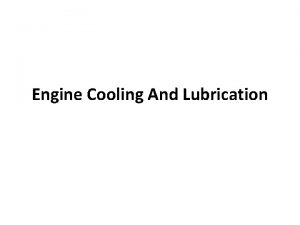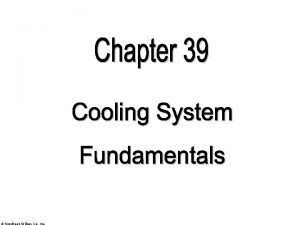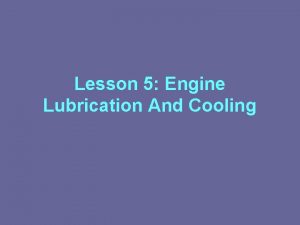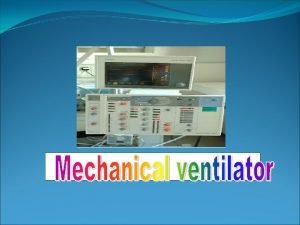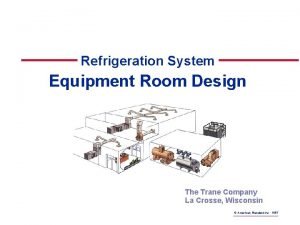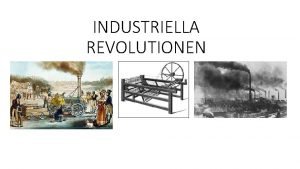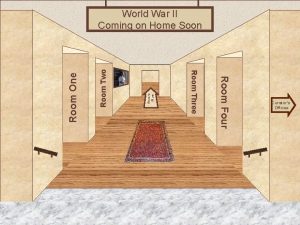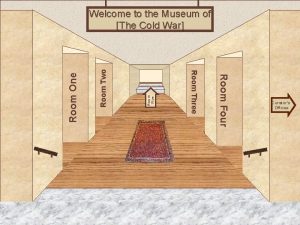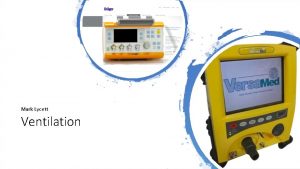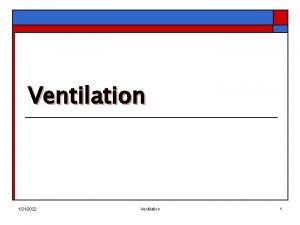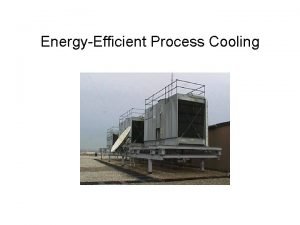Ventilation Hvor Hvorfor Hvordan Engine Room Ventilation Cooling

















- Slides: 17

Ventilation Hvor, Hvorfor, Hvordan?

Engine Room Ventilation Cooling Air A portion of fuel consumed by an engine is lost to the environment in the form of heat radiated to the surrounding air. Any resulting elevated temperatures in the engine room may adversely affect maintenance, personnel, switchgear, and engine or generator set performance. Engine room ventilation air (cooling air) has two basic purposes. • To provide an environment that permits the machinery and equipment to function properly with dependable service life. • To provide an environment in which personnel can work comfortably and effectively.

Engine Room Ventilation Combustion Air In many installations, combustion air is drawn from outside the engine room via ductwork that is designed to move a large amount of air with very little restriction. These installations have very little impact on engine room ventilation design. Main engines : BHP X 6 m³/h Auxillary engines : BHP X 4. 75 m³/h Boiler : kg steam/h X 1. 25 m³/h Other installations, however, require that combustion air be drawn directly from the engine room. In these installations, combustion air requirements become a significant ventilation system design parameter. Approximate consumption of combustion air for a diesel engine is 0. 1 m 3 of air/min/brake k. W produced.

Engine Room Ventilation

Engine Room Temperature Items that require cool air are: • Electrical and electronic components. • Cool air to the air cleaner inlet. • Cool air to the torsional vibration damper. • Habitable temperatures for the engine operator or service personnel. • Cooling air for the generator or other driven equipment. The ventilation system should maintain engine room air temperatures within 8. 5 to 12. 5°C above the ambient air temperature. For example, if the engine room temperature is 24°C without the engine running, the ventilation system should maintain the room temperature between 32. 5°C and 36. 5°C while the engine is in operation. Maximum engine room temperature should not exceed 49°C

Systemdesign T 1 – optimalt airflow T 2 – næsten lige så godt

T 2 – næsten lige så godt

Systemdesign T 3 - Alternativet T 4 – Mindre effektivt

Systemdesign T 5 – Duer ikke…

Multiple Engine Applications

Air Entering the Engine Room The engine room must have openings for air to enter. The intake air opening should be located forward of, and, if convenient, at a lower elevation, than the discharge. The air may also enter from the accommodation spaces, such as the galley and staterooms, or directly through the hull or deck. Engine room air inlets through accommodation spaces can be troublesome.

Varm luft for at undgå tilisning.

OBS punkter. Hvor mange blæsere? Deres kapacitet? Reversering – hvorfor/ikke? Tryk i maskinrummet med/uden blæsere i drift? • Hvad sker der hvis alle brandspjæld lukkes? • Hvad sker der ved tilsmudsning af luftfiltre? • •

Komfortventilation

Krydsvarmeveksler

Enthalpihjul

Decentral køling med køleelementer i de enkelte indblæsningsdyser
 Regresserer
Regresserer Baripity
Baripity Difference between wet sump and dry sump
Difference between wet sump and dry sump Engine cooling system
Engine cooling system Lubrication of couling systems
Lubrication of couling systems Vent modes
Vent modes Ashrae standard 15 refrigerant monitor
Ashrae standard 15 refrigerant monitor External vs internal combustion engine
External vs internal combustion engine Hvorfor er innovation vigtigt
Hvorfor er innovation vigtigt Hva er markedssegmentering
Hva er markedssegmentering Www.freebibleimages
Www.freebibleimages Hvorfor er mangfold viktig
Hvorfor er mangfold viktig Hvorfor digitalisering
Hvorfor digitalisering Den flygande skytteln
Den flygande skytteln Hinduistisk kunst
Hinduistisk kunst Kvalitets kontrast
Kvalitets kontrast Hvorfor feirer vi 17 mai for barn
Hvorfor feirer vi 17 mai for barn Pea hjerterytme
Pea hjerterytme


